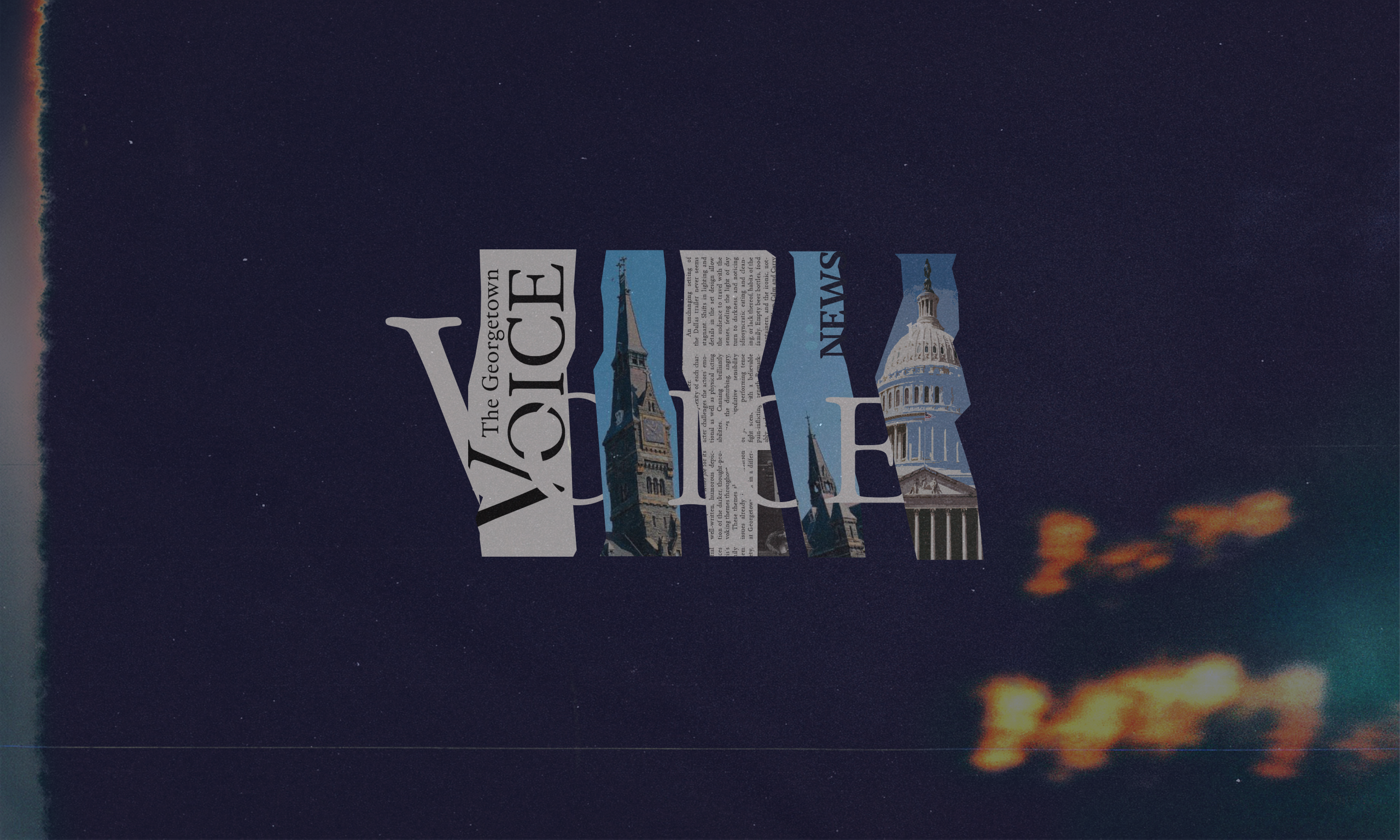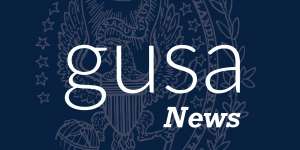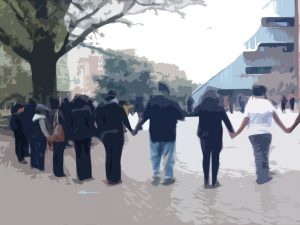Editor’s note: This article mentions a racist cartoon published by the Voice in 2015. Though we recognize we cannot undo any of the harm the cartoon caused, especially to the Black community at Georgetown, we deeply apologize for publishing it and have since issued a retraction. There is no excuse for running such an offensive comic. We are continuing to take steps to address racism in our organization and ensure we do not cause such harm again.
When Amanda Yen (COL ‘23) arrived at Georgetown, she was excited to see two diversity-based classes on her required course list. Through a dialogue space at the university, she had a transformative experience in diversity education, and hoped the required classes would provide more of the same. Those required classes have recently been critiqued by many, including Yen, for being vague or halfhearted, and not appropriately addressing diversity.
“Because of how powerful and transformative that experience was for me, I really wanted to be able to share that with the wider Georgetown community,” Yen said. “I remember seeing the diversity requirement as a first year and thinking ‘oh, this seems like something that would be geared towards doing exactly that.’”
Then, Yen realized her global diversity requirement was covered by a class she was taking on William Shakespeare, an author most American students are introduced to in high school. “That’s not really introducing me to anything new,” she said. “There’s gotta be some things that are sort of falling through the cracks here.”
The requirement has come under criticism from many students for not appropriately engaging with issues of diversity, especially racial diversity, leading some to feel the requirement is only a nominal commitment to diversity and inclusion on campus. In response to these concerns, and with a mandated deadline to reevaluate the five-year-old requirement fast approaching, representatives from different academic councils and student groups have worked to compile research on what a revamped requirement could look like.
Natalia Lopez (SFS ‘22) has been thinking about this since last summer. Then the chair of academic affairs for GUSA, she helped bring the issue to the Main Campus Executive Faculty, who then created a subcommittee. Since then, students like Lopez and Yen have been conducting research through The Hub For Equity And Innovation In Higher Education, a research unit based in Georgetown. The approaching deadline to reevaluate and nationwide attention to racial justice after the police murder of George Floyd created the impetus to discuss the requirement students were already dissatisfied with, according to Lopez.
“There had always kind of been talk about the diversity requirement and how it was something that was very unintentional and people just kind of did it to do it,” she said. “People were not really getting that intentionality that the goals of it were supposed to create”
The diversity requirement currently requires all students to take two classes that “engage with diversity issues;” one in a domestic context and one in a global one. The requirement is supposed to “prepare students to be responsible, reflective, self-aware and respectful global citizens through recognizing the plurality of human experience and engaging with different cultures, beliefs, and ideas.” A wide range of classes fit the requirement, from “Justice and Media” to “Intro to Ethics” and “Advanced Spanish for Business.” No specific curriculum is required for the courses, many of which fulfill core or major requirements, and handle many forms of diversity, including racial, gender, sexual, language, religious, and regional.
“For me personally, it’s always been this feeling that the diversity requirement is well-intentioned but it’s not doing as good of a job as it could be doing,” Yen, who is on the College Academic Council, said. It turns out students agree with her. Through the Hub, the university has collected the opinions and experiences of over 900 students and faculty on the current diversity requirement and spent the spring analyzing them.
According to Lopez, while there were some success stories, two broad themes emerged: students felt professors did not intentionally incorporate diversity into the curriculum, or they did so with only a shallow engagement. Yen said the same. “We do see some people, a lot of people actually, who are a little bit confused about what the goal of the diversity requirement is supposed to be, and that’s because of the very broad definition of diversity itself.”
Part of this confusion may be because the requirement is fairly new; the Main Campus Executive Faculty voted to add the requirement in the spring of 2015, and the requirement was first implemented as a prerequisite to graduate for the class of 2020. At that time, the faculty decided to revisit the requirement during the 2020-2021 academic school year, to see if improvements could be made.
According to students, they can. Some suggestions include focusing on structures of power and privilege and how students fit into them, narrowing down the number of courses, and focusing on discussion-based courses where personal experiences can be added with guidance. Students are also looking for more consistency across the requirement, making the requirement stand alone from filling other course attributes, mandating when the course should come in a student’s education, the class sizes, and what departments can offer the course, and considering if co-curricular spaces can contribute. “These are all things that are swirling around in the same space but so far I don’t think anything has come forward as this is what we must be doing,” Yen said.
One main criticism of the current requirement is its lack of clear focus on racial diversity, especially given the university’s commitment to anti-racism. “We have definitely seen, especially in the context of now, a lot of push for making sure that racial diversity and equity is something that is addressed within the curriculum,” Lopez said.
According to Yen, students have suggested adding a class to the requirement specifically focused on race, such as an African American studies class or a course about the 272+ enslaved people sold by the Jesuits in 1838. While she doesn’t anticipate the requirement only focusing on race, the team is paying attention to what identities are currently missing from many of the classes that fit the requirement, including race, ability and disability, and socioeconomic status.
“When it comes to the diversity of someone’s social identities, race is one of the most salient identities that people will mention,” she said, adding that the team is working to include intersectionality as a key part of the requirement. Intersectionality, a term used in social justice education, refers to the acknowledgement that intersecting identities, such as being a woman of color, can lead to overlapping oppressions and a unique experience. “Putting the focus on racial diversity is definitely going to be part of the diversity requirement but I don’t see it being the only form of diversity that the diversity requirement is going to include,” Yen said.
According to a university spokesperson, Georgetown is open to implementing changes proposed by students. “We are continuing to work to ensure that this Diversity Requirement works as effectively as possible towards this goal, “ they wrote. “We are working on adjustments to better implement the current requirement with clearer expectations, while also collecting data from all constituents for a full revision recommendation in the coming academic year (2021-2022). “
Conversations about implementing a diversity requirement as part of the curriculum began in 1991, and the push resumed in 2000 with a student rally in Red Square. In 2001, a formal request was made for a two-class requirement, with a class for all undergraduates entitled “U.S. Pluralism in a Global Context: Interrogating Difference” supplemented by a cross-listed course. The proposal was rejected in 2002.
Efforts resumed once again in 2007, leading to an academic working group through the President’s Diversity Initiative. In the working group’s final report, released in 2009, they recommended adding a diversity requirement to the curriculum. Again, no curriculum changes were made.
In 2015, students gathered once again to ask the university for a diversity requirement, this time in response to a racist cartoon published by the Voice depicting violence against a Black student and a female student by two white students. Though student calls for a diversity requirement were largely centered around race, administrators emphasized they would be considering all forms of diversity in the new requirement, and created a list of already-offered courses that would fulfill the new requirement.
Despite the slow path to an initial requirement, Lopez said the administration has been eager to work with students on a revised plan. “This is something I think Georgetown is taking very seriously in terms of making sure there’s a good research foundation for what we do next to make sure it’s sustainable,” she said. “I’ve been very surprised in a great way that Georgetown is actually taking the evaluation of this seriously.”
The team is hoping to develop proposals over the summer and implement the new requirement in the next few years. According to Yen, the goal was to have something ready for the class of 2025, but COVID-19 delayed the timeline. While it is uncertain what a future diversity requirement might look like, it will be crafted from the input of students.
“Whatever the diversity requirement looks like at the end of our work is going to have come out of all of these student surveys and focus groups and all of these insights we have taken directly from the student population,” she said. “It will be like what students want, what a great majority of voices on campus want.”




